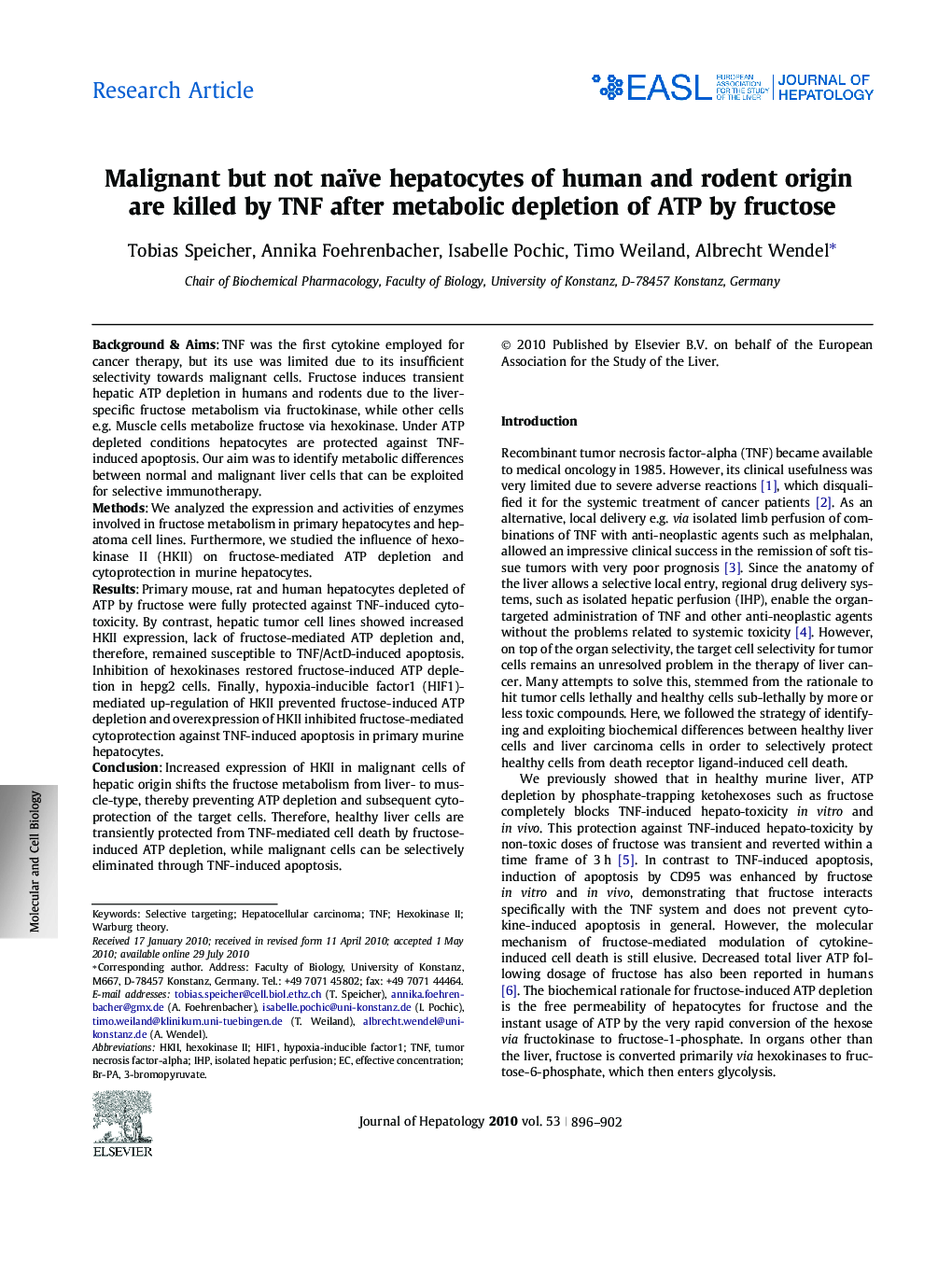| Article ID | Journal | Published Year | Pages | File Type |
|---|---|---|---|---|
| 6106756 | Journal of Hepatology | 2010 | 7 Pages |
Background & AimsTNF was the first cytokine employed for cancer therapy, but its use was limited due to its insufficient selectivity towards malignant cells. Fructose induces transient hepatic ATP depletion in humans and rodents due to the liver-specific fructose metabolism via fructokinase, while other cells e.g. Muscle cells metabolize fructose via hexokinase. Under ATP depleted conditions hepatocytes are protected against TNF-induced apoptosis. Our aim was to identify metabolic differences between normal and malignant liver cells that can be exploited for selective immunotherapy.MethodsWe analyzed the expression and activities of enzymes involved in fructose metabolism in primary hepatocytes and hepatoma cell lines. Furthermore, we studied the influence of hexokinase II (HKII) on fructose-mediated ATP depletion and cytoprotection in murine hepatocytes.ResultsPrimary mouse, rat and human hepatocytes depleted of ATP by fructose were fully protected against TNF-induced cytotoxicity. By contrast, hepatic tumor cell lines showed increased HKII expression, lack of fructose-mediated ATP depletion and, therefore, remained susceptible to TNF/ActD-induced apoptosis. Inhibition of hexokinases restored fructose-induced ATP depletion in hepg2 cells. Finally, hypoxia-inducible factor1 (HIF1)-mediated up-regulation of HKII prevented fructose-induced ATP depletion and overexpression of HKII inhibited fructose-mediated cytoprotection against TNF-induced apoptosis in primary murine hepatocytes.ConclusionIncreased expression of HKII in malignant cells of hepatic origin shifts the fructose metabolism from liver- to muscle-type, thereby preventing ATP depletion and subsequent cytoprotection of the target cells. Therefore, healthy liver cells are transiently protected from TNF-mediated cell death by fructose-induced ATP depletion, while malignant cells can be selectively eliminated through TNF-induced apoptosis.
